The Nine Most Harryhausen-esque Monsters in Advanced Dungeons & Dragons
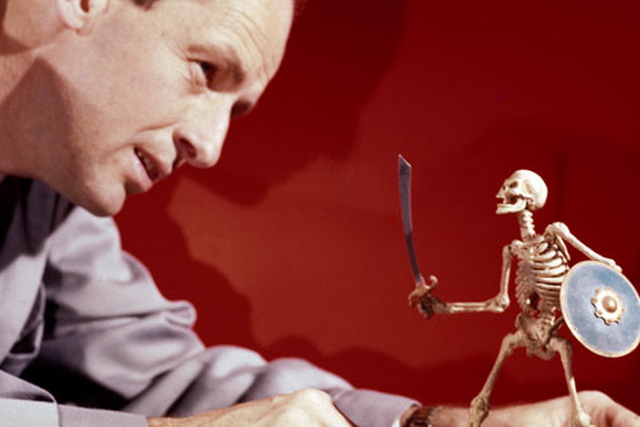 |
| Wikimedia Commons |
Ever since the publication of the Advanced Dungeons & Dragons Dungeon Masters Guide in 1979 with its now famous Appendix N, there has been a lot of discussion of the literature that influenced the creation of D&D. RPG hipsters and D&D scholars alike love to name drop Appendix N into conversations. The scholars do so to share their passion for the game. Hipsters do so because they think it makes them sound impressive to RPG neophytes, as if having read Lin Carter’s Thongor series or Gardner Fox’s Kothar series were praiseworthy. Trust me, if I were asked whether I had any regrets in life, I would have to say “Yes, I have regrets in life. I’ve read Lin Carter’s Thongor novels.” Lin Carter was an amazing editor, but he was nowhere close to a masterful writer.
It wasn’t only books – both great and terrible – that influenced the creation of the D&D game. As Jon Peterson points out in his excellent book Playing at the World, films also played a significant role in the imaginations of D&D‘s creators. According to Peterson, D&D co-creator David Arneson “found inspiration…in classic B-movies like those of Hammer Studios, Roger Corman, monster-perpetuated disaster extravaganzas and anything featuring the inimitable claymation of Ray Harryhausen.”
I was glad to read Ray Harryhausen’s name in the list of D&D inspirations, as it made a connection between two of my passions. I’ve been playing D&D for over twenty years, and have been a fan of Harryhausen’s special effects for even longer. Harryhausen’s cinematic work is emotionally evocative and timeless. There is a reason that Jason and the Argonauts is included in the 85 movies Martin Scorsese thinks are must sees in order to be able to talk about film. And it’s not just Jason that Scorsese thinks is vital. As the Fast Company article points out, “as part of his film education of his daughter, [Martin] Scorsese screened a bunch of Ray Harryhausen classics, including [Jason and the Argonauts].”
Like many here at Topless Robot, I was deeply saddened by the news of Ray Harryhausen’s death at the age of 92 on May 7 of this year. Luke summed up my feelings when he asked, “How do you begin to encapsulate the life of a man who has meant so much to everything we hold dear?” Our editor’s answer was that we cannot, and that the best way to do even try was to show a sampling of his work. I would add that we can also show some of the works that he inspired, and the Dungeons & Dragons game falls squarely into that category.
But we don’t have to take my word for it, as all it takes is a quick look through the AD&D Monster Manual to see the Harryhausen influence on the world’s most played role playing game. Join me as I take a walk down memory lane to see some of Ray’s classic monsters, and then look at the 9 most Harryhausen-esque monsters of AD&D.
9) The Roc – I’m not talking about the pro-wrestler and movie star here. I’m talking about the famous monster from the Tales of the Arabian Nights. Sinbad and his crew are attacked by one of these terrifying creatures when they try to steal a giant Roc egg to make giant Roc omelets. The – ever reliable – Wikipedia tells us that the Roc “had its origins… in the fight between the Indian solar bird Garuda and the chthonic serpent N?ga…” and that Marco Polo described the creature as “so strong that it will seize an elephant in its talons and carry him high into the air and drop him so that he is smashed to pieces.”
It is possible that the Roc would have appeared in the Dungeons & Dragons game without the influence of Ray Harryhausen’s film, because the image in the Monster Manual is evocative of a Detmold illustration from The Arabian Nights. The Monster Manual description matches that from Marco Polo’s account and from that of The Arabian Nights in that it tells us these creatures “prey on large creatures such as cattle, horses, and elephants.” Just because the creature existed in mythology and classic tales of wonder doesn’t mean that the 7th Voyage of Sinbad – based as it was on those same tales of wonder – didn’t have a strong influence on the minds of Gary Gygax and David Arneson. It does mean that no matter how awesome these birds are, that we have to put them lower on the list than creatures more quintessentially Harryhausen. As an aside, the Roc in the Detmold illustration and the D&D Roc have only one head and Harryhausen’s has two. I think that the two-headed Roc is more intimidating and from now on, all of my Rocs will have two heads.
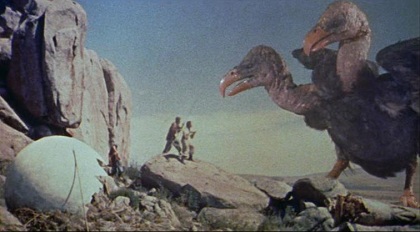 |
| The Monster Archives |
| How Bad Did You Want Those Scrambled Eggs? |
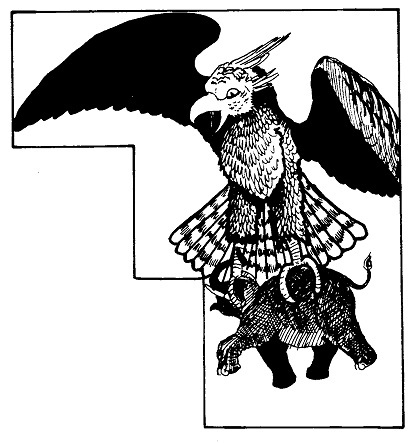 |
| AD&D Monster Manual 1979 |
8) Talos (Iron Golem) – Jason and the Argonauts may well be the most D&D movie of all time. You have an adventurer who has been given a quest, recruits an adventuring party, and levels up along the way. It’s got an overpowered magic item that allows the PCs to ask favors from the gods. Heck, the party even has characters that were clearly made my min/maxers as well as characters who are only there for role playing purposes. Add to that the intra-party conflict, and this film might as well be made by Dead Gentleman Productions. It’s filled with epic moments, such as when Poseidon holds back the clashing rocks for our heroes (because…reasons). Among these moments is when the party encounters Talos, the ultimate Iron Golem.
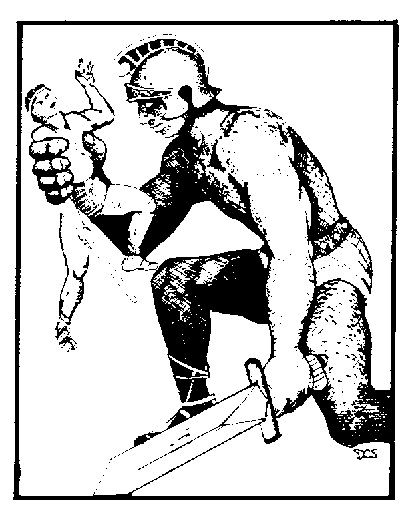 |
| Monster Manual 1979 – David C. Sutherland |
| Talos at Half Size? |
Not only is Talos the ultimate Iron Golem, according to the Advanced Dungeons & Dragons Dungeon Masters Guide, Talos is a “triple iron golem” and is listed among means player characters can use to crush and destroy magical artifacts and relics. So impressed with Ray Harryhausen’s automaton were the creators of D&D that they incorporated Talos into the game’s mythology. When I see kids asking how one makes a triple iron golem and guess that it’s done using three metals or giving it three heads, I roll my eyes and wonder if these kids have ever seen Jason and the Argonauts. It makes me sad and worried for the future of mankind.
7) Harpies – Harryhausen’s Harpies are a little more PG than those in the Monster Manual, which seem to be based on an old medieval bestiary, but it’s clear by the description in the rulebook that the movie had some influence on their inclusion in the game. The film has the Harpies spoil the food of Phineus and the good old MM says Harpies “attack, torture, and devour their charmed prey. What they do not want they foul with excrement.”
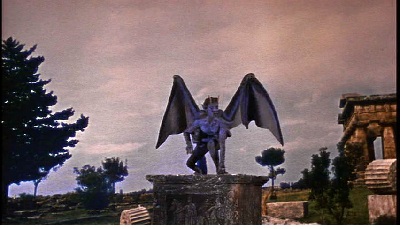 |
| Anglofimia |
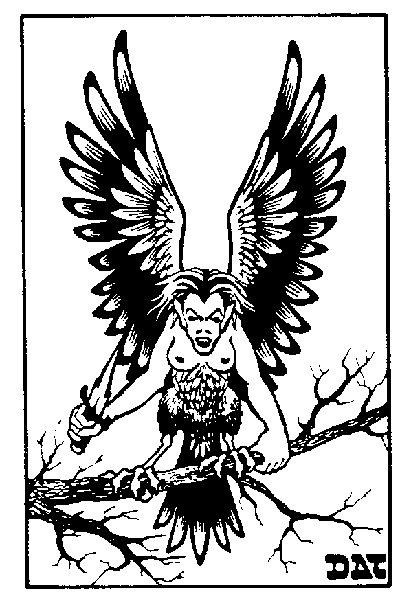 |
| Monster Manual 1979 — David Trampier |
In the classical depiction of the Harpies in the Argonautica, Phineus is rescued from the Harpies through the efforts of the Boreades. The Boreades were Argonauts with wings who battled the Harpies in the air. In the film Jason and the Argonauts, the Boreades are missing and the Argonauts have to use their wits to defeat the vile creatures. Most players of early editions of the Dungeons & Dragons game would be wise to follow the path of the cinematic Argonauts, as wings of flying are far to rare a magic item in most campaigns.
6) Type V Demon (Marilith) – Given that the AD&D Monster Manual features this fusion of Harryhausen’s “Avatar of Kali” from The Golden Voyage of Sinbad and the serpent woman from The 7th Voyage of Sinbad, is it really all that surprising that Pat Pulling or Jack Chick thought that D&D was destroying the souls of children? This book sold at Toys R Us and it featured artwork like this? Looks like a modern version of Porky’s that took place in the ’80s might have to feature a copy of the Monster Manual instead of Nat Geo.
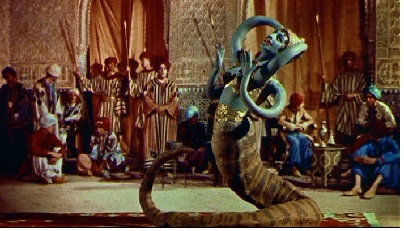 |
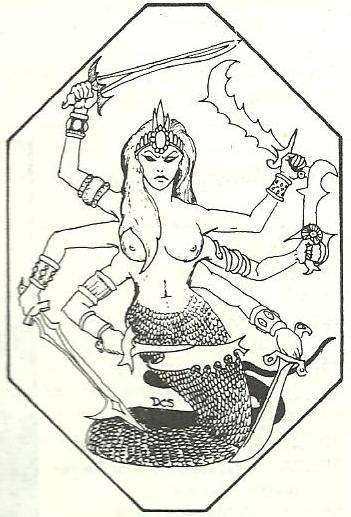 |
| Monster Manual 1979 |
I have never found a specific reference to Marilith, or Type V Demon as we “old school” gamers call her, in any mythology that I have read. It seems pretty clear that the demon is based on Hindu mythological references. Given the lack of references to the Ramayana or the Mahabharata in Appendix N, my guess is that like most Americans the primary image of a multi-armed swordswoman that inspired Gygax and Arneson were the two Harryhausen figures. If they weren’t, they most certainly should have been. The fight between the “Avatar of Kali” and Sinbad’s crew in The Golden Voyage of Sinbad is pretty spectacular.
5) T-Rex – If you can tell me why a “Fantasy” roleplaying game would feature a T-Rex outside of influence from the films of Ray Harryhausen, I’m game. I know that Edgar Rice Burroughs has them in his hollow world, but c’mon, this has to be a Harryhausen reference.
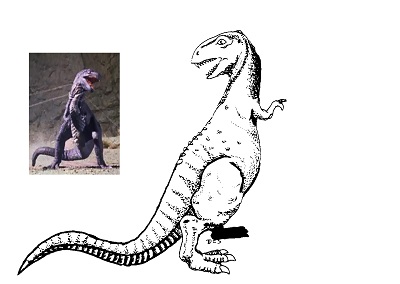 |
| Valley of Gwangi vs. Monster Manual 1979 |
| Mirror Images? |
To be fair, Gygax does mention Edgar Rice Burrough’s “Pellucidar” series in his Appendix N, and John Eric Holmes – who wrote the first Basic D&D set – wrote an authorized sequel to the “Pellucidar” tales, but it is also hard to imagine the inclusion of dinosaurs in a sword and sorcery fantasy game without some significant visual references in the minds of potential players. Without having seen Harryhausen dinosaurs, I don’t think that I would have been as open to the idea of having them in my fantasy role playing game and The Isle of Dread would have seemed a bit of a disconnect.
A little over halfway through the list and we already have enough awesome to write a Harryhausen homage adventure.
4) Cyclops – Did I say earlier that Jason and the Argonauts was the most D&D film of all time? Hmm… I might have to rethink that because The 7th Voyage of Sinbad comes pretty close to taking the title. Adventuring party sent on ridiculous mission? Check. Overpowered magic items possessed by party? Yep…Genie Lamp. Wait a minute…this adventure has both a dungeon and a dragon…and the evil wizard needs a dragon on a chain to keep this crazy Cyclops at bay.
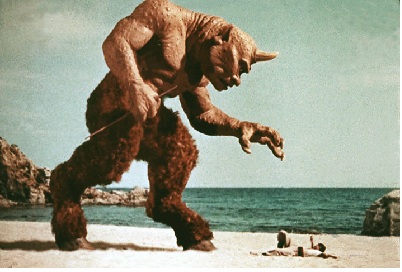 |
In ancient mythology the Cyclops of Homer’s Odyssey is probably the most memorable, but Polyphemus is not an animalistic creature. Polyphemus knows when he has been tricked by Odysseus and he cries out to Poseidon for aid. In the Advanced Dungeons & Dragons Deities and Demigods book, these are classified as Greater Cyclops, but there is a Lesser Cyclops as well. The Lesser Cyclops is brutish and tends to live a solitary life on islands who seem to have as their sole purpose the eating of adventurers…kind of like Harryhausen’s Cyclops.
3) Hydra – It looks like Jason and the Argonauts isn’t going down without a fight for which Harryhausen movie had the most influence on D&D. The Hydra from this movie is amazing. The fight between the Hydra and Jason a grand demonstration of just how skilled a craftsman Ray Harryhausen was. There are so many moving parts. It almost boggles the mind at the amount of patience it would take to animate this sequence.
 |
In the tales of Jason and his Argonauts, his battle against the dragon is one of the ways in which Jason’s adventures mirror the labors of Herakles. In the Argonautica, Jason must battle a dragon in a manner similar to Harakles’ battle against the Lernaean Hydra and Jason must sow fields with the Khalkotauroi – bull shaped fire-breathing automatons – which echoes Herakles 10th labor with the Cretan bull. Harryhausen’s Hydra is closer to the Larnaean Hydra than it is to descriptions of the dragon Jason faces in myth, and is one of many demonstrations how Harryhausen borrowed liberally from myth and was willing to add his own touches in order to improve a tale. One would do well to follow that advice when running a good campaign.
2) Carrion Crawler – When I first saw an illustration of this creature, my response was “how the fuck would anyone come up with an idea for a giant tentacled caterpillar?” It seems that the easy answer to that is, “because they saw Ray Harryhausen’s work in First Men in the Moon.”
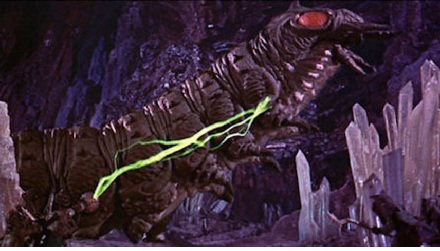 |
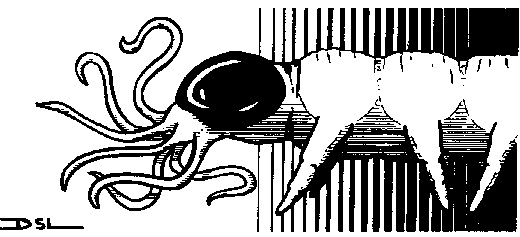 |
| D&D Basic Set 1981 |
The Carrion Crawler is one of those quintessentially D&D creatures, so much so that when Hasbro issued the OGL they excluded the creature from the open license. One of the things that I find so interesting about the creature is that the Monster Manual version of the creature has no attacks that cause damage to its opponents. The creature can paralyze its foes, but it cannot kill them. This makes it a great creature to pair up with other foes and provides a potential non-lethal foe for adventurers to face. I have often wondered why the creature has no attacks that cause damage. Is it because it is really only interested in carrion?
1) Skeletons – What? You thought that number one would be the Minoton? I love that animated brass golem as much as the next guy, but Harryhausen’s skeletons are iconic. They are the skeletons to beat all skeletons, and they are what will help us decide whether Jason and the Argonauts or The 7th Voyage of Sinbad is the most D&D movie of all time. Weapon-wielding skeletons aren’t a commonplace feature in a lot of fantasy stories, and according to the recent Osprey book on the Argonautica the classical version of the Children of the Hydra is as “mud men” that are comprised of actual flesh and blood. This leads one to believe that the skeletons of D&D are Harryhausen Skeletons. Another dead giveaway regarding the origins of the D&D Skeleton is the fact that in AD&D, Skeletons only take half-damage from bladed weapons. Only blunt weapons do full damage. Watch these two sword fights and tell me that Gygax and Arneson weren’t thinking about these fights when they made that rule.
If you were to ask most film fans what the most “Harryhausen-esque” of monsters were, I think you would be hard pressed to find a person who didn’t answer that it was his Skeletons that fit the bill. Not only do Skeletons highlight Harryhausen’s skill as an artist, there is something chilling about them in how they are always smiling. No matter how much damage you do to the body, a Skeleton’s head seems to be taunting you.
I know…I know…you’re wondering where the epic creatures from Clash of the Titans fit into the mix. Though the Medusa image in the Monster Manual might bear a resemblance to Harryhausen’s, Clash of the Titans was released in 1981 which is two full years after the Monster Manual was printed. In 1981, Larry DiTillio – of He-Man fame – wrote up D&D and Runequest stats for all of the monsters in Clash. Back in the early 1980s audiences were fairly critical of Bubo, or as the charming mechanical owl has been referred to by nay sayers… the Jar Jar Binks of Clash of the Titans, so Larry left out statistics for the little automaton.
Since that time, and possibly as the result of two remakes, Bubo has acquired some fans so maybe we’ll see stats for him yet. Let’s see…AC? 19…Alignment? Chaotic Good…HD?…
Related Posts
-
The 9 Oddest Things G1 Transformers Transformed Into
?Generation 1 Transformers are near and dear to many of our
by Ethan Kaye -
 8 Reasons Ernest Cline’s Armada Is Nothing Like Ready Player One (and Why That’s Not a Bad Thing)
8 Reasons Ernest Cline’s Armada Is Nothing Like Ready Player One (and Why That’s Not a Bad Thing)The meteoric rise of Ernest Cline should be an inspiration to
by Jason Helton
About The Author
Christian Lindke
In between studying for a Ph.D. in Political Science at the University of California, Riverside and being a non-profit Program Director, Christian Lindke spends his time experiencing as much of pop culture as possible and playing role playing games. He hosts the Advanced Dungeons and Parenting Blog and holds an M.B.A. in Marketing.
